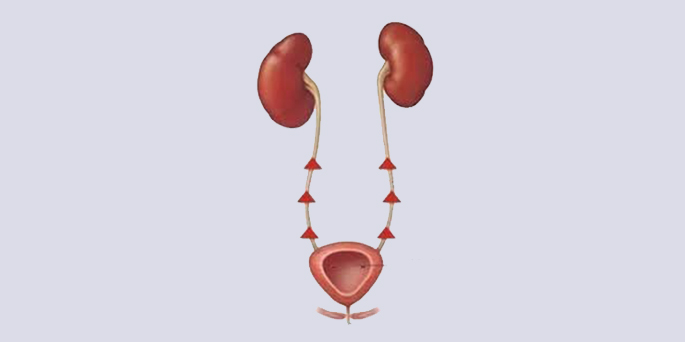
Vezikoüreteral Reflü (VUR)
Reflux is a medical term which means backflow. Just like stomach acid escaped from the esophagus of stomach acid, the urine in the urine bag can escape back into the kidney in the urinary tract. This condition is called Vesicoureteral Reflux (VUR). VUR is usually caused by a defect at the junction of the bladder and urine tube. VUR is very common in childhood.
Urinary tracts consist of kidneys, ureters (ureters), bladder and urethra (urethra) respectively from top to bottom. Blood coming into the kidney is filtered through a highly developed filter system and harmful wastes in the blood are extracted. The clean blood returns to the circulatory system, and the filtered wastes form the urine. The urine is delivered to the urinary bladder by urine pipes called ureters. Urine is stored in the bladder and extracted by the urinary tract.
In VUR, the urine in the urine bag returns to the urethra. VUR can lead to severe urinary tract infections, kidney damage, hypertension, and even kidney failure if is not treated.
How is VUR Diagnosed?
VUR is the first condition that should come to mind after the first urinary tract infection in a girl or boy, regardless of age. Ultrasound and medicated voiding films are made for VUR. It can be understood by this technique if there is an enlargement in the kidneys and urine tubes. In the urination film, a catheter is inserted to the bladder with medicated water. The film is then shot while the child is peeing. In this film, the urine in the urinary bladder, whether the run back and how much escape is evaded.
Treatment of VUR
In the treatment of VUR, the degree of reflux is important in the choice of treatment. VUR is a disease that can be seen in many different degrees.
At very low temperatures, no intervention is required. It may be enough to follow for the children. Some children may need long-term prophylactic antibiotic therapy to prevent urinary tract infection. In some patients, special fillers are injected into the urinary bladder. It is entered from the normal urinary tract closed and injected with a special needle. This process is called the STING method and takes about 10 min.
In children with a higher degree of reflux, the area where the ureter enters the urethra is corrected again by operation. This is called ureteroneosistostomy. This operation is performed by open or closed (laparoscopic) methods.

